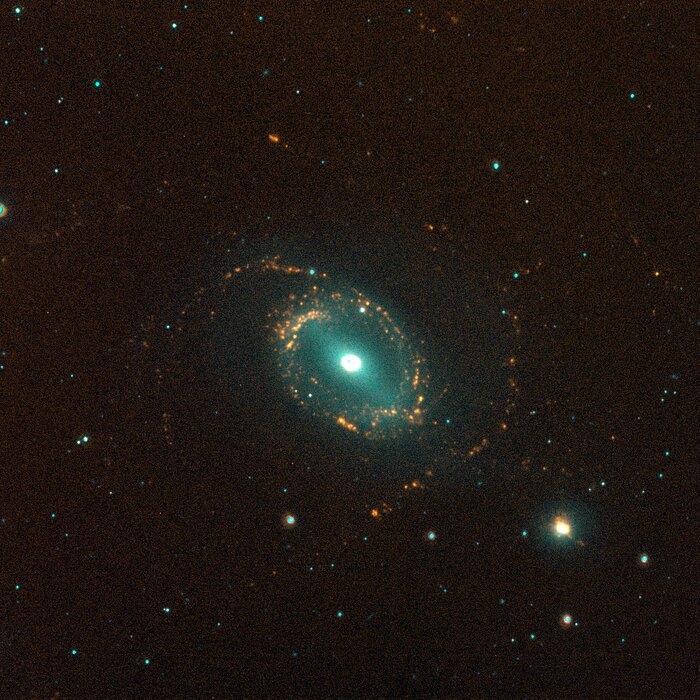NGC 1512/10, SINGG Survey
Gas-rich galaxies display a wide range of structures and properties, but one thing they all seem to have are some newly formed stars. Images from the Survey for Ionization in Neutral Gas Galaxies (SINGG), an NOAO Survey Program (obtained with the CTIO 1.5m telescope), are designed to highlight areas of star formation in gas rich galaxies.
This image shows a strong interaction between the barred spiral NGC1512 and its Blue Compact Dwarf (BCD) companion, NGC1510. Star formation in NGC1512 is concentrated into two rings; the inner one has the strength of a starburst. Surprisingly star formation is even stronger in the BCD NGC1510, which can be seen to the lower right of NGC1512. This pair ilustrate how galaxy interactions are able to trigger starbursts.
The image is displayed so that stars have a cyan-blue appearance, while ionized hydrogen (H-alpha) emission appears orange-red to yellow. The H-alpha emission marks where the gas in the galaxies has been stripped of electrons, and is now recombining. It takes very hot O stars to ionize the gas; these stars have very short lifetimes (a few million years). As a result, red tones in these images typically mark the location of newly formed hot stars.
Gerhardt Meurer of The Johns Hopkins University, Baltimore, MD, is the principal investigator for SINGG. For more information, see: http://sungg.pha.jhu.edu/
Credit:The SINGG Survey Team and NOIRLab/NSF/AURA
About the Image
| Id: | noao-j0403-43_crop1 |
| Type: | Observation |
| Release date: | July 11, 2006, 10:27 a.m. |
| Related announcements: | noaoann06019 |
| Size: | 1800 x 1800 px |
About the Object
Coordinates
| Position (RA): | 4 4 10.69 |
| Position (Dec): | -43° 20' 8.29" |
| Field of view: | 12.96 x 12.96 arcminutes |
| Orientation: | North is 180.0° right of vertical |
Colors & filters
| Band | Tele-scope |
|---|---|
| SMARTS–GSU 1.5-meter Telescope | |
Ha | SMARTS–GSU 1.5-meter Telescope |

